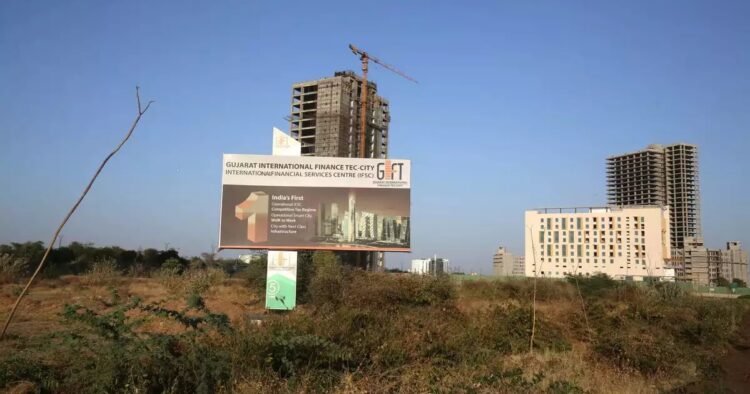The Bharat Prime Minister, Narendra Modi, wants to revive a project started in 2011 to build a financial hub in Gujarat called GIFT City. This project aimed to be a tax-neutral financial center for banks, exchanges, and investment funds, challenging Mumbai’s dominance in this regard.
While many banks have set up operations in GIFT City, the hub hasn’t become as successful as anticipated. The goal is to turn it into a thriving financial ecosystem with higher market activity. Currently, it hosts over 400 entities, mostly banks, employing around 20,000 people.
Modi recently addressed an investment conference to reinvigorate GIFT City, envisioning it as a “new age financial services and technology nerve center.” To encourage this, new rules are expected to allow direct equity listing of Bharat firms at GIFT City from April next year.
The new rules will enable Bharat companies to list directly on GIFT City, raising funds in dollars without going to more expensive foreign exchanges. Additionally, foreign brokers will be allowed to trade on GIFT City exchanges without a physical presence.
The hub offers tax benefits, such as a 10-year relief on withholding tax for foreign borrowings of Bharat companies routed through GIFT City. Banking assets have grown to $52 billion, mostly in loans. Around 80 funds with commitments of $24 billion have set up in GIFT City, including Bharat funds investing overseas and offshore hedge funds investing in Bharat.
Despite these advantages, GIFT City faces challenges. It lacks the vibrant lifestyle found in financial hubs like Singapore or Dubai. The infrastructure, including limited public transport and a lack of restaurants and bars, makes it less appealing. Residential buildings are unoccupied, and people prefer areas with more amenities.
Authorities acknowledge the need for better social infrastructure and are addressing it in phases. The goal is to improve the overall appeal of GIFT City and make it a more attractive destination for professionals and businesses.

















Comments